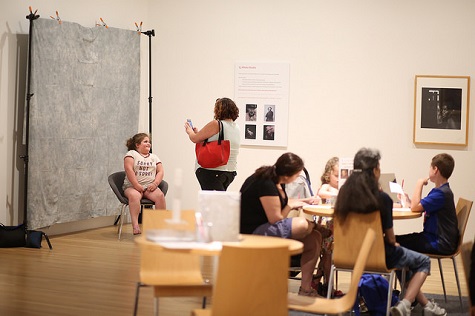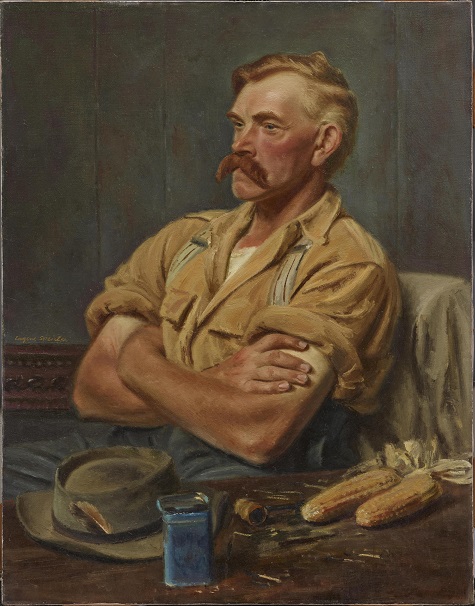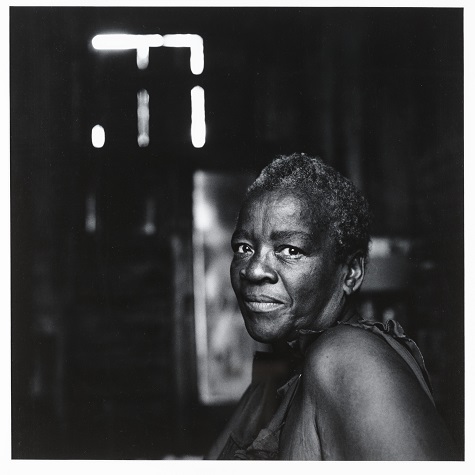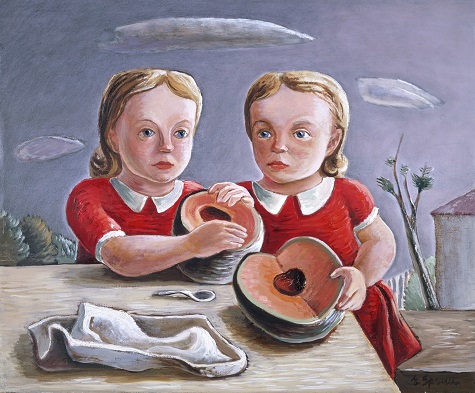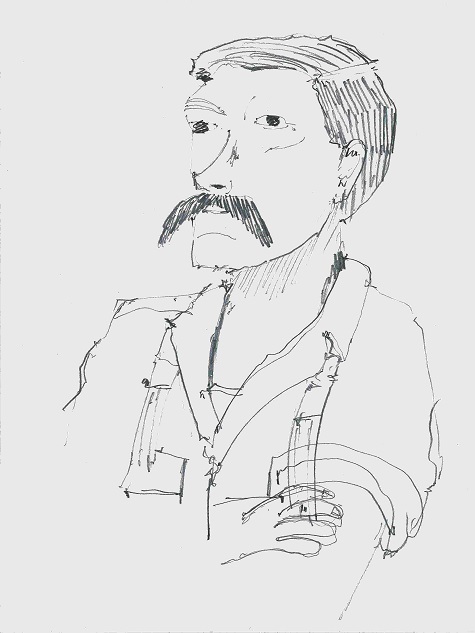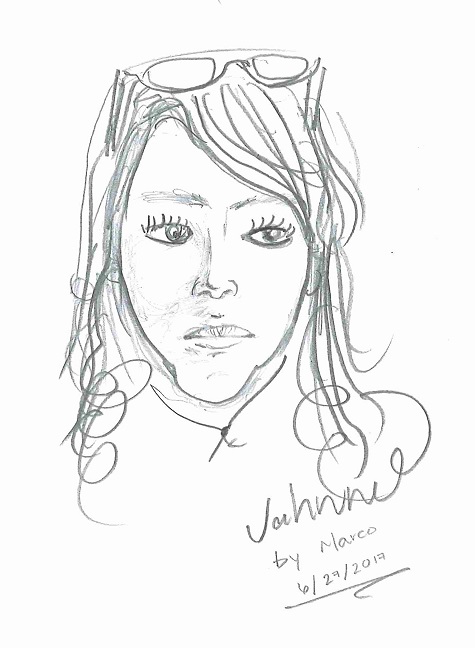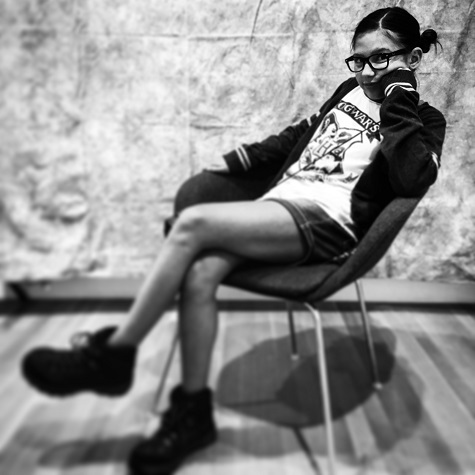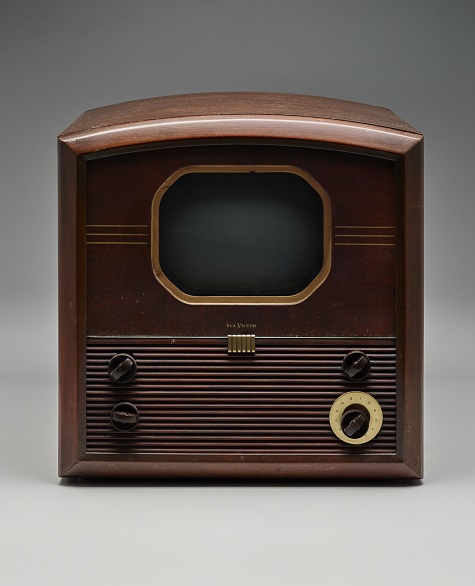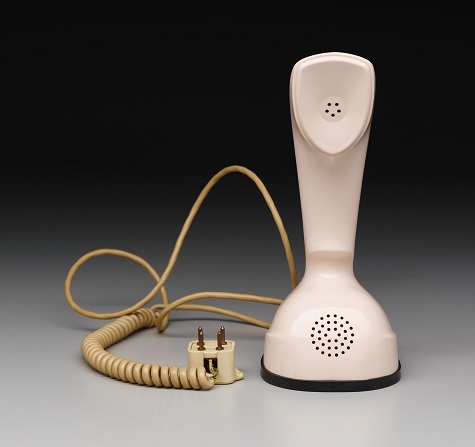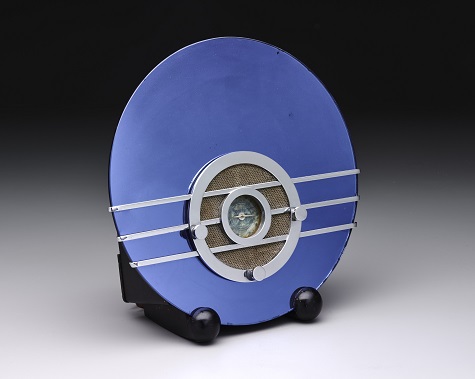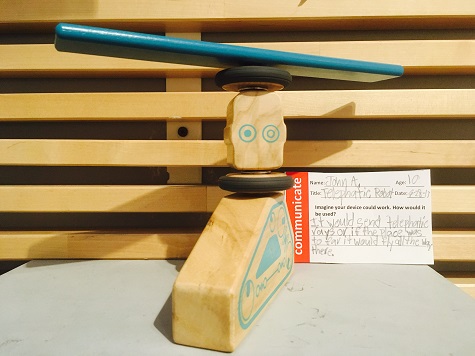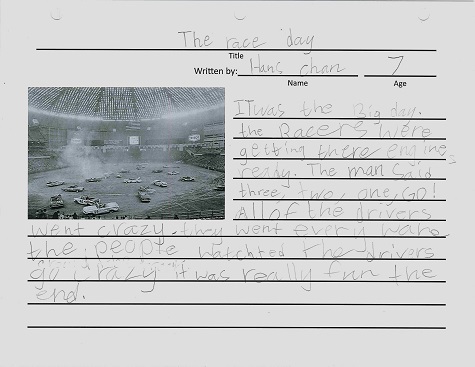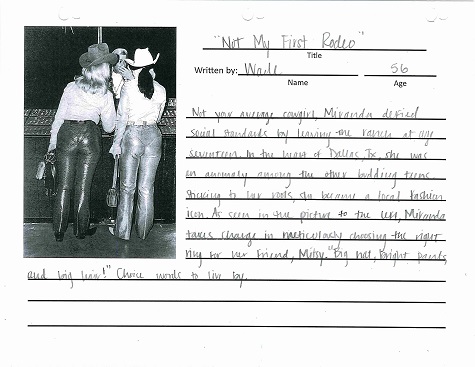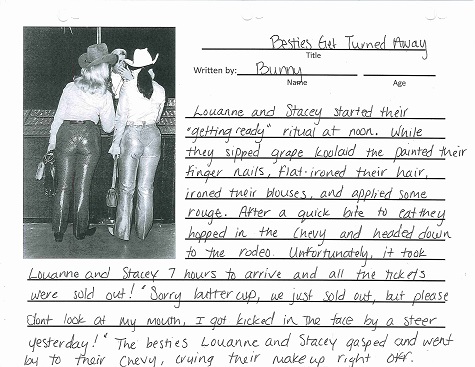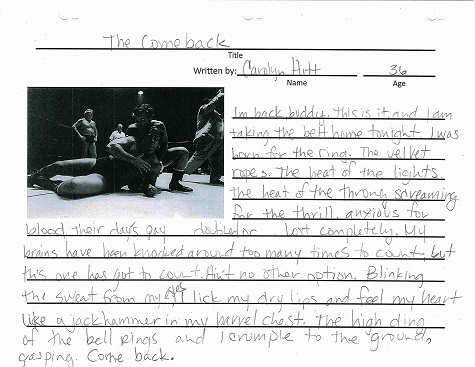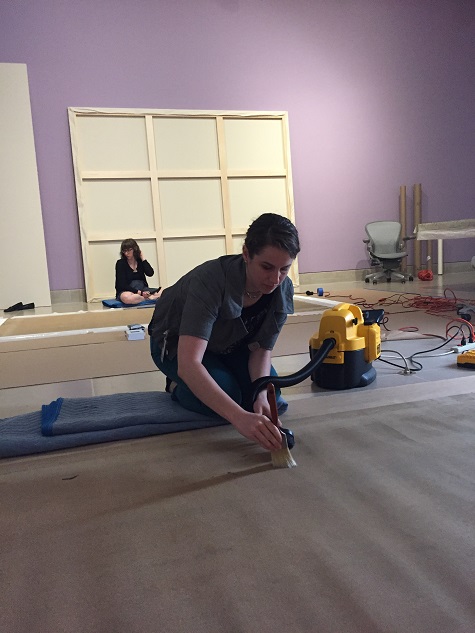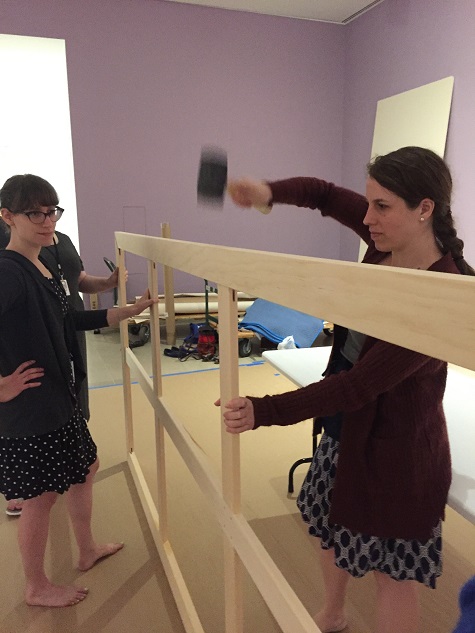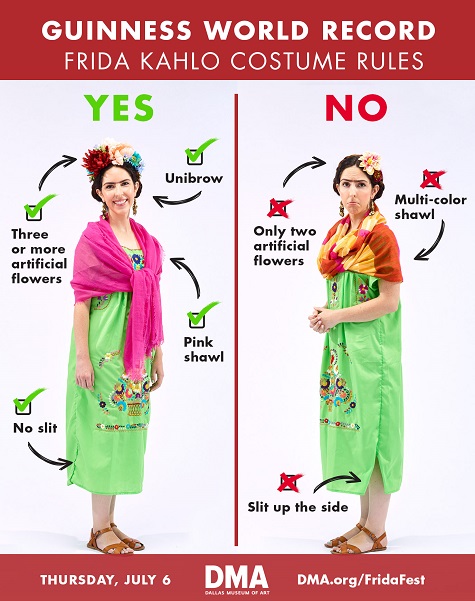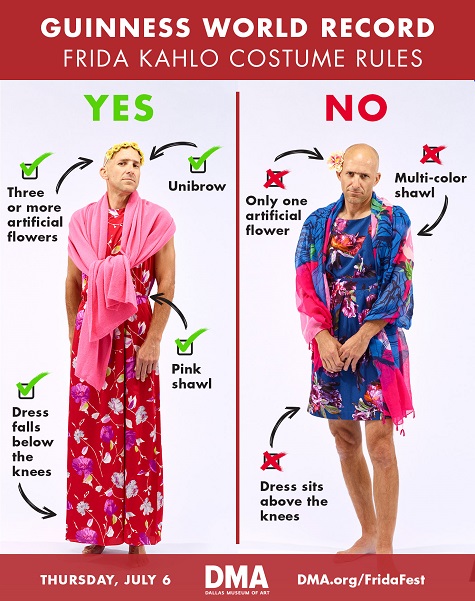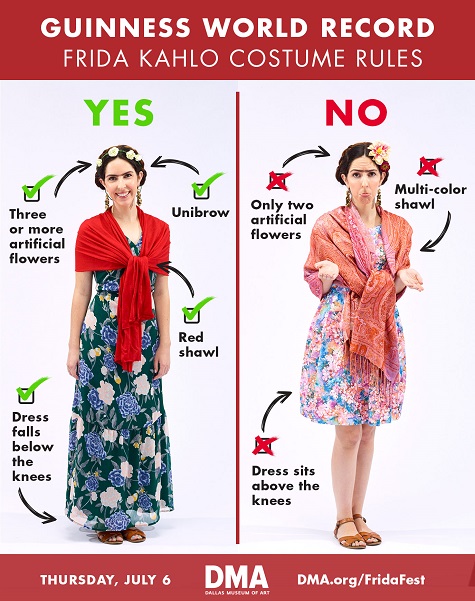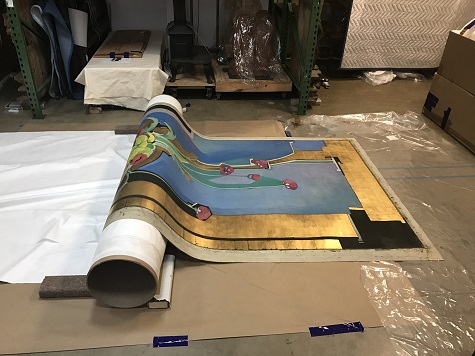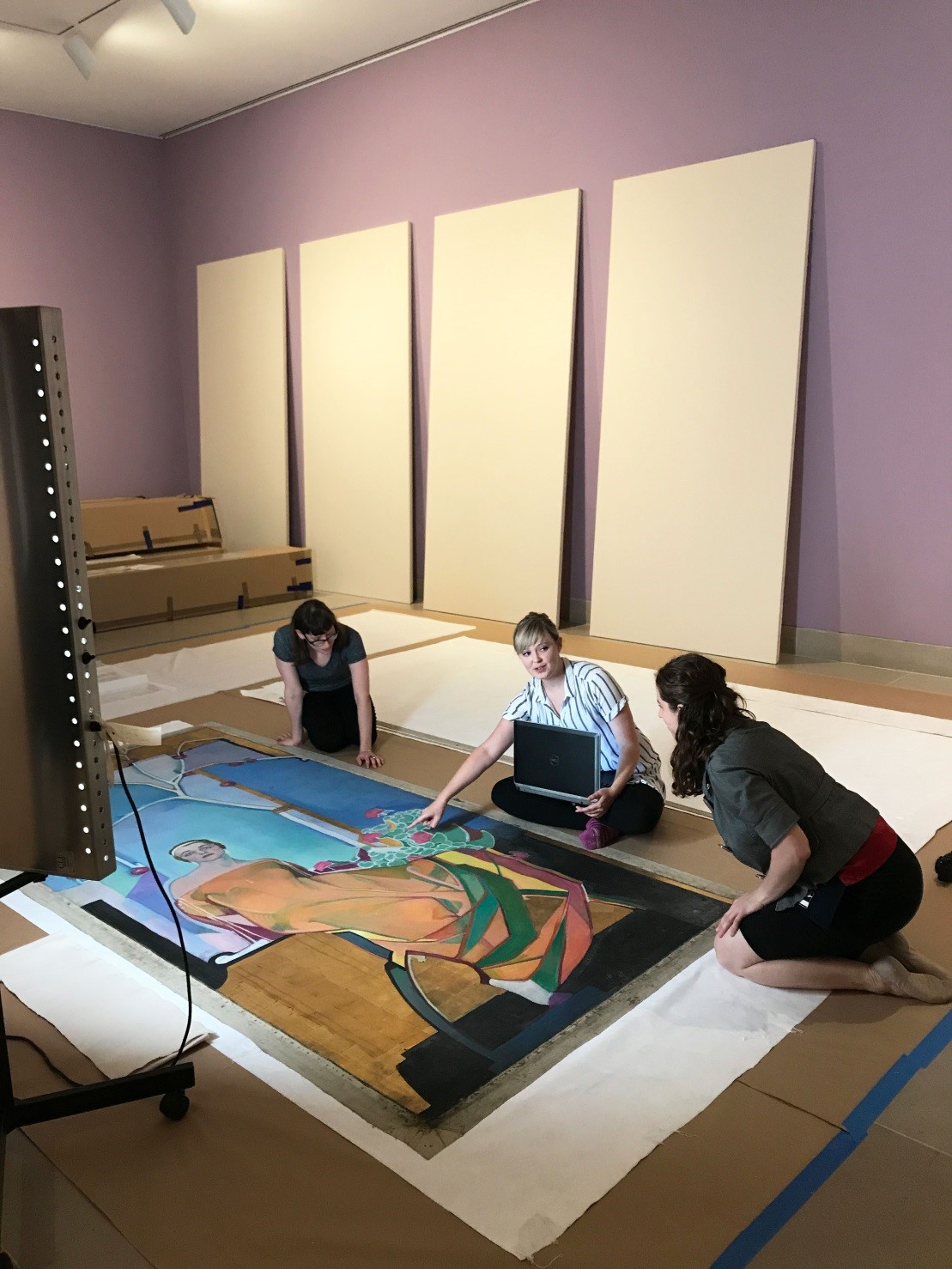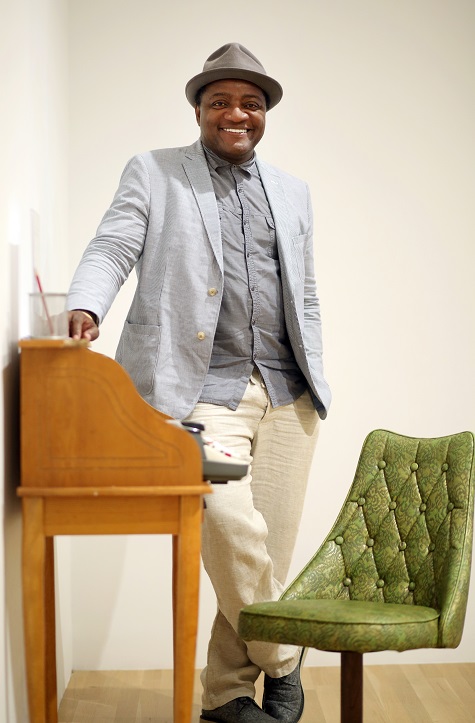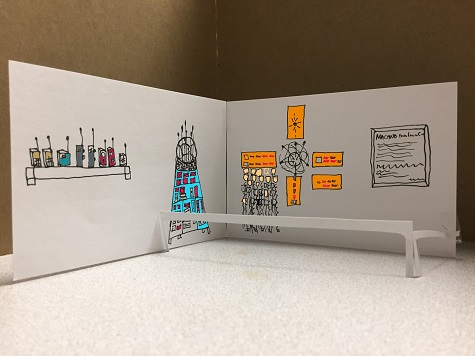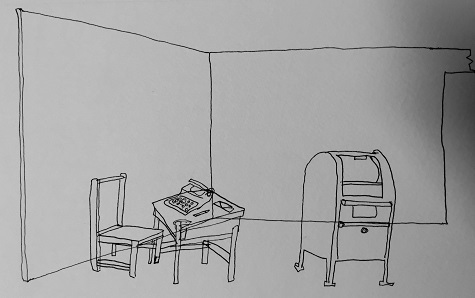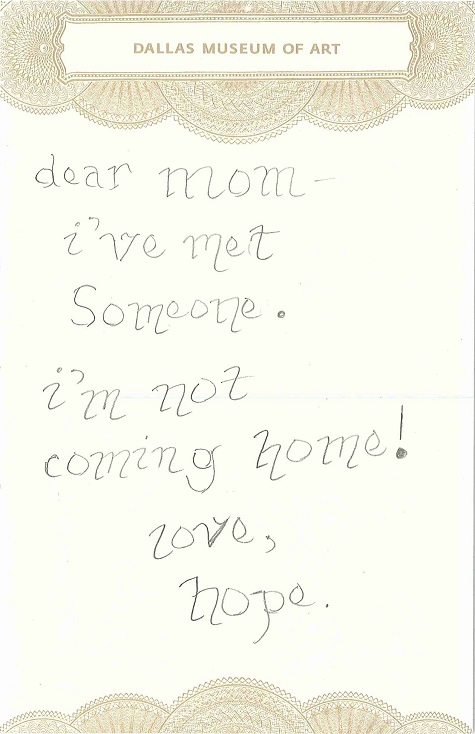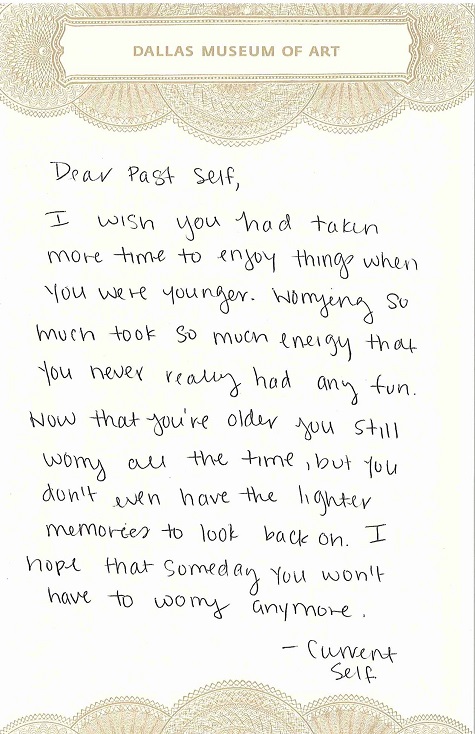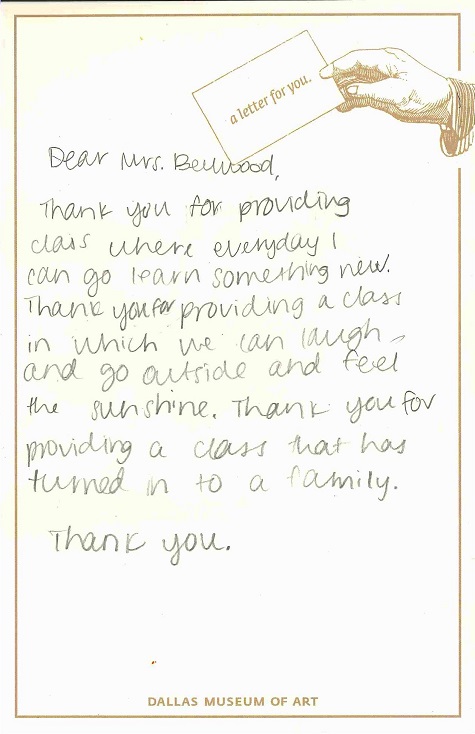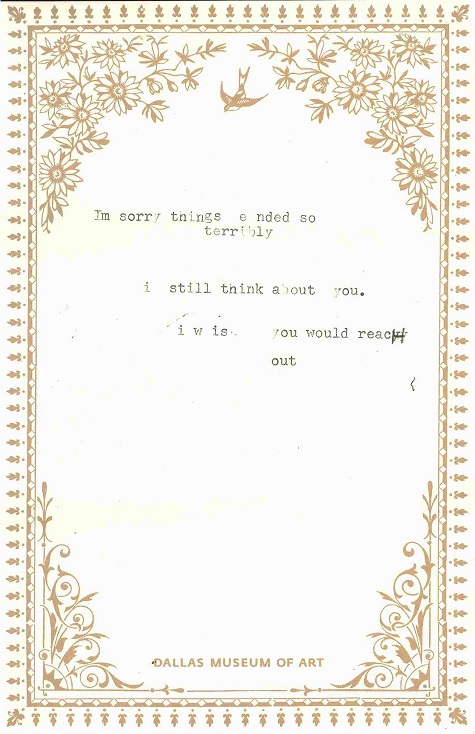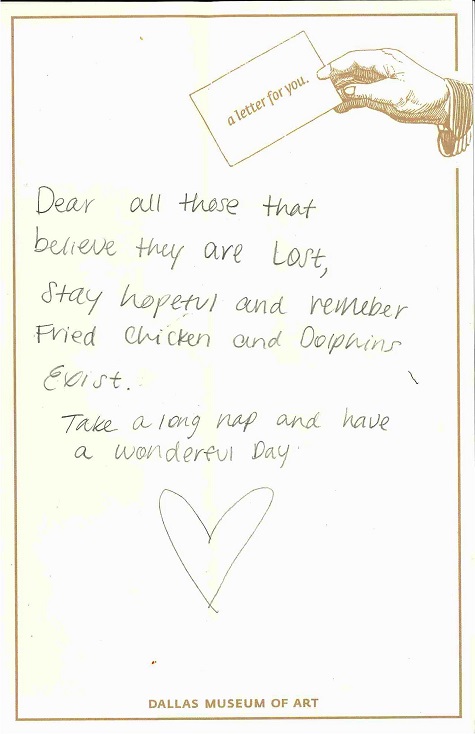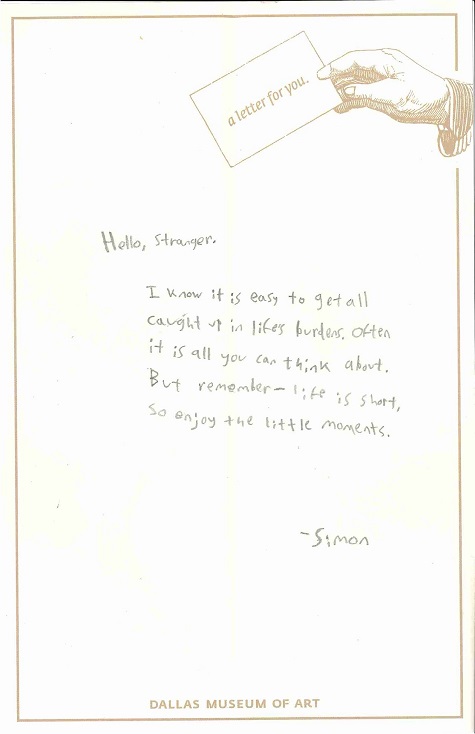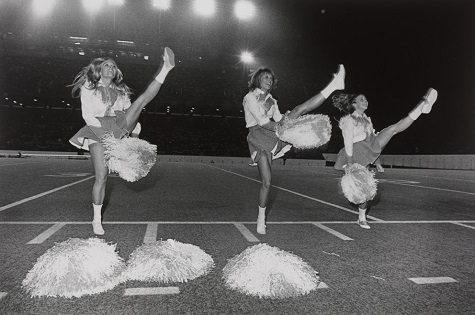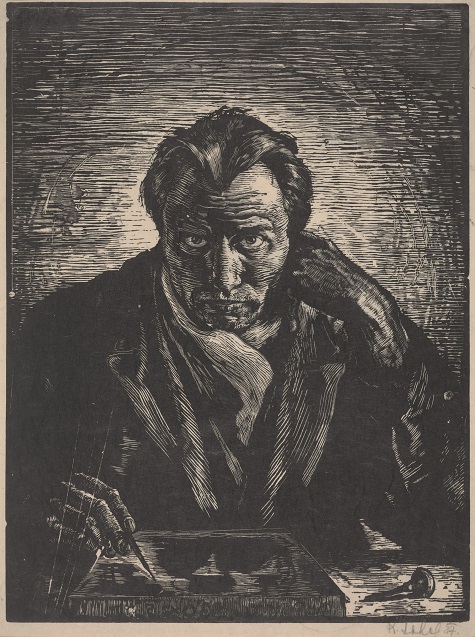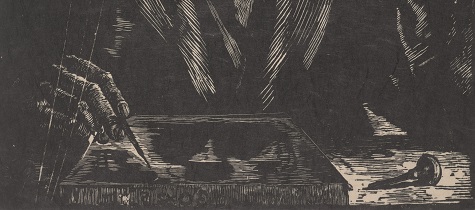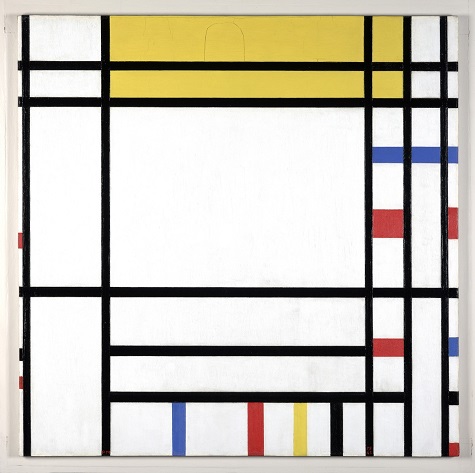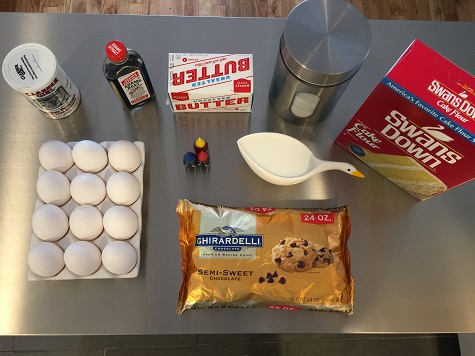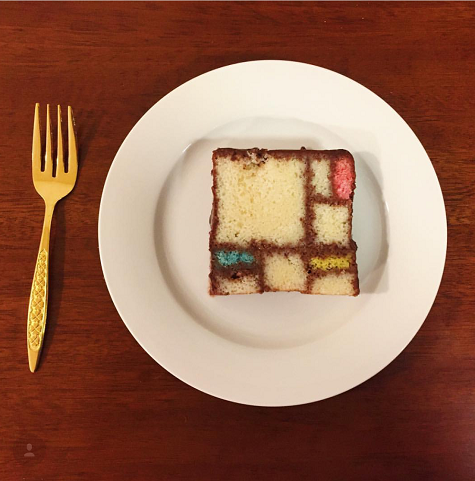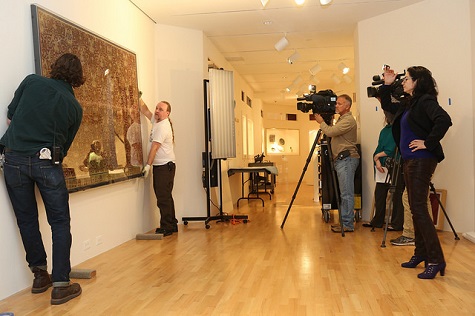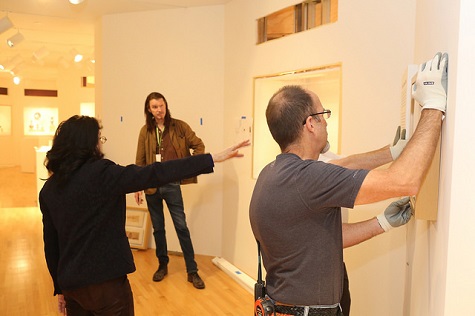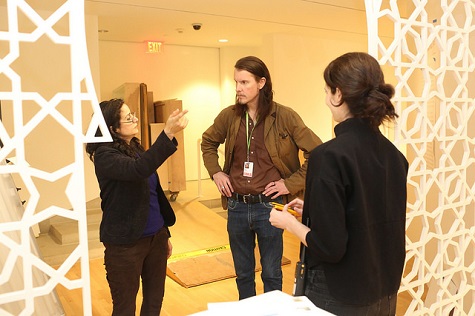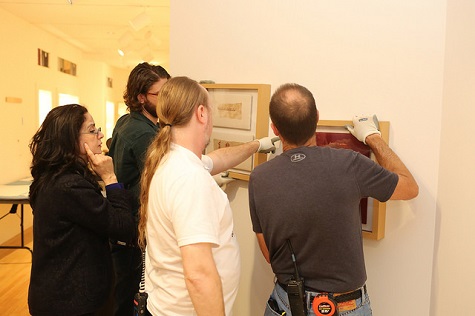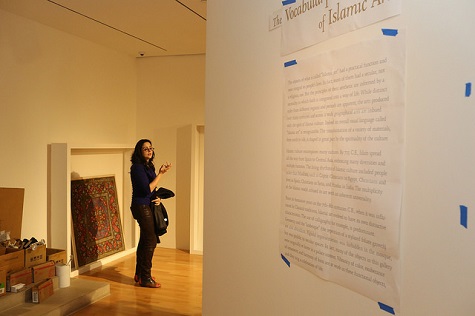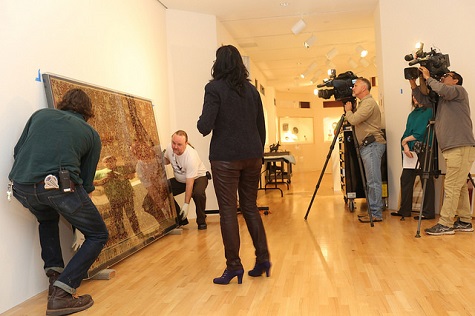Stop by the Center for Creative Connections (C3) this summer to see the newly installed exhibition, Art of Communication. Bringing together works from the Museum’s decorative arts and design, American, contemporary, European, and Latin America art collections, this exhibition explores some of the ways visual art serves as a tool for communication. Explore objects arranged in three categories: Communication Through Portraiture, Communication Through Design, and Communication Through Narrative. Each section has a corresponding activity so you can take a moment to draw, create, or write inspired by the works of art on display. Here’s a peek at some of the works of art on view and visitor creations:
Communication Through Portraiture
Sit at the drawing horses and sketch the portraits on view, take a seat at the table and try your hand at drawing a self-portrait or a portrait of a friend, or take turns being the artist in the Photo Studio and pose a friend for a photo portrait.
Communication Through Design
Get inspired by these works of art designed for communication and create your own communication device. Fill out a label and display your device on the shelves at the C3 Art Spot.
Communication Through Narrative
A Texas Dozen is a photographic portfolio by photographer, filmmaker, and journalist Geoff Winningham. From Dallas to Houston, Winningham captured the life and regional rituals of Texans in the early 1970s. These photographs tell a multitude of stories from events across the Lone Star State. Choose one photograph that catches your eye and write a story inspired by the characters and scene.
Remember, the Center for Creative Connections is open anytime the DMA is open and is always free! Stop in, enjoy the art, and get creative. All ages welcome!
Images: Eugene Speicher, The Farmer, c. 1923, oil on canvas, Dallas Museum of Art, Dallas Art Association Purchase; Debbie Fleming Caffery, Looking at Me (Polly), 1984, elatin silver print, Dallas Museum of Art, Jackson, Walker, Winstead, Cantwell & Miller Fund 1998.186;Everett Spruce, Twins, 1939–1940, oil on canvas, Dallas Museum of Art, Dealey Prize, Eleventh Annual Dallas Allied Arts Exhibition, 1940 1940.21; Nam June Paik, Music Box Based on Piano Piece Composed in Tokyo in 1954, 1994, Vintage TV cabinet, Panasonic 10 TV model 1050R, Panasonic mini video camera, incandescent light bulb and 144-note music box mechanism, Dallas Museum of Art, bequest of Dorace M. Fichtenbaum 2015.48.113; “Ericofon” pattern telephone, Telefonaktiebolaget L M Ericsson, designed 1949–1954, plastic, metal, molded, Dallas Museum of Art, 20th-Century Design Fund 1995.118; “Bluebird” radio (Model 566), Designer: Walter Dorwin Teague, c. 1934, glass, chrome-plated metal, fabric, and painted wood, Dallas Museum of Art, bequest of Sonny Burt, Dallas 2014.60.4; Geoff Winningham, The Cronin Gallery, Tag Team Action, Wrestling, negative 1971, print 1976, gelatin silver print, Dallas Museum of Art, gift of Prestonwood National Bank 1981.36.1; Geoff Winningham, The Cronin Gallery, Lamé Pants, Houston Livestock Show and Rodeo, negative 1972, print 1976, gelatin silver print, Dallas Museum of Art, gift of Prestonwood National Bank 1981.36.13
Jessica Fuentes is the Manager of Gallery Interpretation and the Center for Creative Connections
